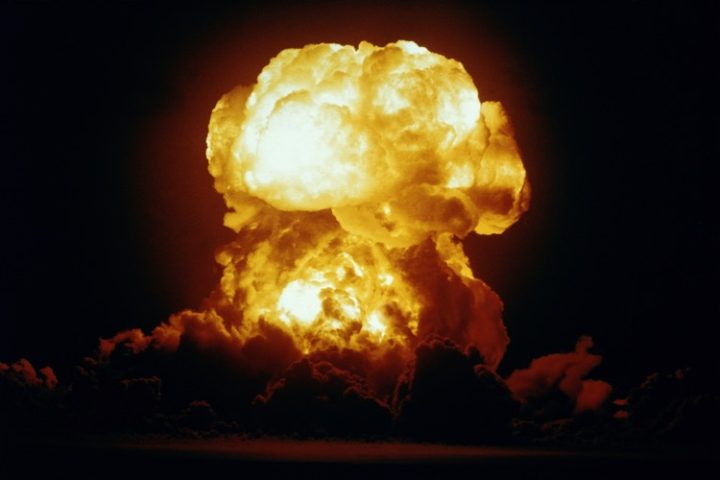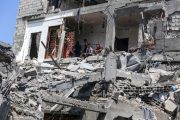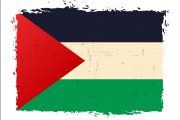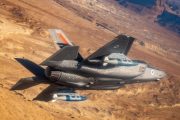
Israel should use Jericho missiles to “level” Gaza “without mercy” after last weekend’s attacks by Hamas, lawmaker Revital “Tally” Gotliv has declared. Gotliv is a member of the Israeli Knesset from the Likud Party, the party of Prime Minister Benjamin Netanyahu.
“Jericho Missile! Jericho Missile! Strategic alert. before considering the introduction of forces. Doomsday weapon! This is my opinion. May God preserve all our strength,” Gotliv posted on X on October 9, based on a machine translation from Hebrew.
Jericho refers to an Israeli intercontinental ballistic missile (ICBM), whose most recent version is capable of striking almost anywhere in the world. Israel is widely known to have anywhere from 100-200 nuclear warheads, which the Israeli government has neither confirmed nor denied.
On October 10, Gotliv added another post, calling for “crushing and flattening Gaza.”
“Only an explosion that shakes the Middle East will restore this country’s dignity, strength and security! It’s time to kiss doomsday. Shooting powerful missiles without limit. Not flattening a neighborhood,” she posited. “Otherwise we did nothing.”
“Not with slogans, with penetrating bombs. Without mercy!” Gotliv elaborated.
X classified her post as potentially breaching rules against violent speech, but did not remove it as it was regarded to be in the public interest.
Moreover, Gotliv lauded U.S. leader Joe Biden for a “flame-throwing speech that showed Hamas that we are not alone in our intent to wipe it off the face of the earth.”
Hamas, a Palestinian militant group which dominates much of Gaza, staged “Operation Al-Aqsa Flood” on October 7, firing rockets and deploying fighters to Israeli territory. The Israel Defense Force retaliated by bombing Gaza and cutting off its utilities.
As of October 10, the Israeli authorities noted at least 900 killed and 2,600 wounded. Meanwhile, the Palestinian authorities in Gaza have registered at least 830 dead and another 4,250 injured since the eruption of tensions.
In response to Gotliv’s posts, journalist James Clay posted on X: :
“Where is the outrage? MK Revital Gotliv demands nuclear-capable Jericho missiles to ‘flatten’ #GazaUnderAttack. Could the genocidal intent of Israel’s fascistic ruling class be any more clear? This woman is more than a lunatic. Hers is the barbarism of a dying social class.”
Furthermore, the Palestinian Foreign Ministry claimed in a social-media post on October 10 that the Israel Defense Forces (IDF) has reportedly used white phosphorus munitions in its attacks on Gaza, posting a video depicting the consequences of an alleged Israeli strike using the weapon.
“The Israeli occupation is using internationally banned white phosphorus bombs against the Palestinians in the Karama neighborhood in northern Gaza,” the ministry claimed, in a caption with a video clip.
Although international law does not forbid the use of white phosphorus munitions, such use is tightly controlled. These munitions should not be used in densely populated areas, owing to the threat they pose to civilians, according to the 1980 UN Convention on Certain Conventional Weapons.
It remains uncertain if the video published by the Palestinian officials on X is recent, or where precisely it was recorded.
In 2006, the Israeli government acknowledged using white phosphourous during its months-long war with Lebanese militant group Hezbollah. At that time, Israel maintained that it used the munitions without breaching international law, despite numerous media reports that they were targeted especially at areas with civilian populations.
In 2009, Israel admitted using “munitions containing white phosphorus” during an offensive in Gaza between December 2008 and January 2009.
Nongovernmental organization Human Rights Watch has denounced Israel for these actions, portrayed as “evidence of war crimes” by the NGO. Media reports also stated that Israel’s use of such munitions caused a UN compound in Gaza to partially burn down after the incendiary substance came into contact with it at the time.
In April 2013, Israel declared that it would stop using white phosphorus munitions to create smokescreens and would instead use gaseous substances for these aims. No new reports about its use by the IDF surfaced since that time until recently, following Hamas’ attacks on Israel last weekend.
The UN said on October 10 that it would start a war-crimes probe of both Israeli and Palestinian sides, quoting “clear evidence” that there were breaches of international law.
Meanwhile, Syrian state TV declared that Israel had bombed both Damascus and Aleppo airports on October 12.
News agency Reuters reported that Syrian local media channel Sham FM claimed the Syrian air defense forces scrambled in response to “bursts of missiles” striking the two airports “simultaneously,” destroying the runways.
While no casualties were reported from Aleppo airport, Syrian officials provided no details about the degree of damage or any casualties in Damascus. Technical teams were mobilized to both sites to assess the ramifications of the strikes.
Thus far, the IDF has declined to comment on the airstrikes. However, Reuters’ sources have asserted that the attacks were meant to disrupt Iranian supply lines to Hezbollah combatants in Syria and Lebanon.
Additionally, Reuters indicated that the airstrikes were staged a day before Iranian Foreign Minister Hossein Amirabdollahian’s scheduled trip to Syria.
At first, a few Arab publications reported that Amirabdollahian was already en route when the airports were bombed, prompting his plane to return to Tehran. While there was an Iranian passenger plane that was compelled to return to Tehran after the Syrian airports had been bombed by Israel, there is no evidence at the time of reporting that this plane contained any Iranian military officials or “tons of anti-tank missiles” meant for Hezbollah, as social media users have claimed.
Nevertheless, Amirabdollahian arrived at about the same time in Baghdad, which was meant as his first stop on his scheduled trip before traveling further to Syria on October 13.



